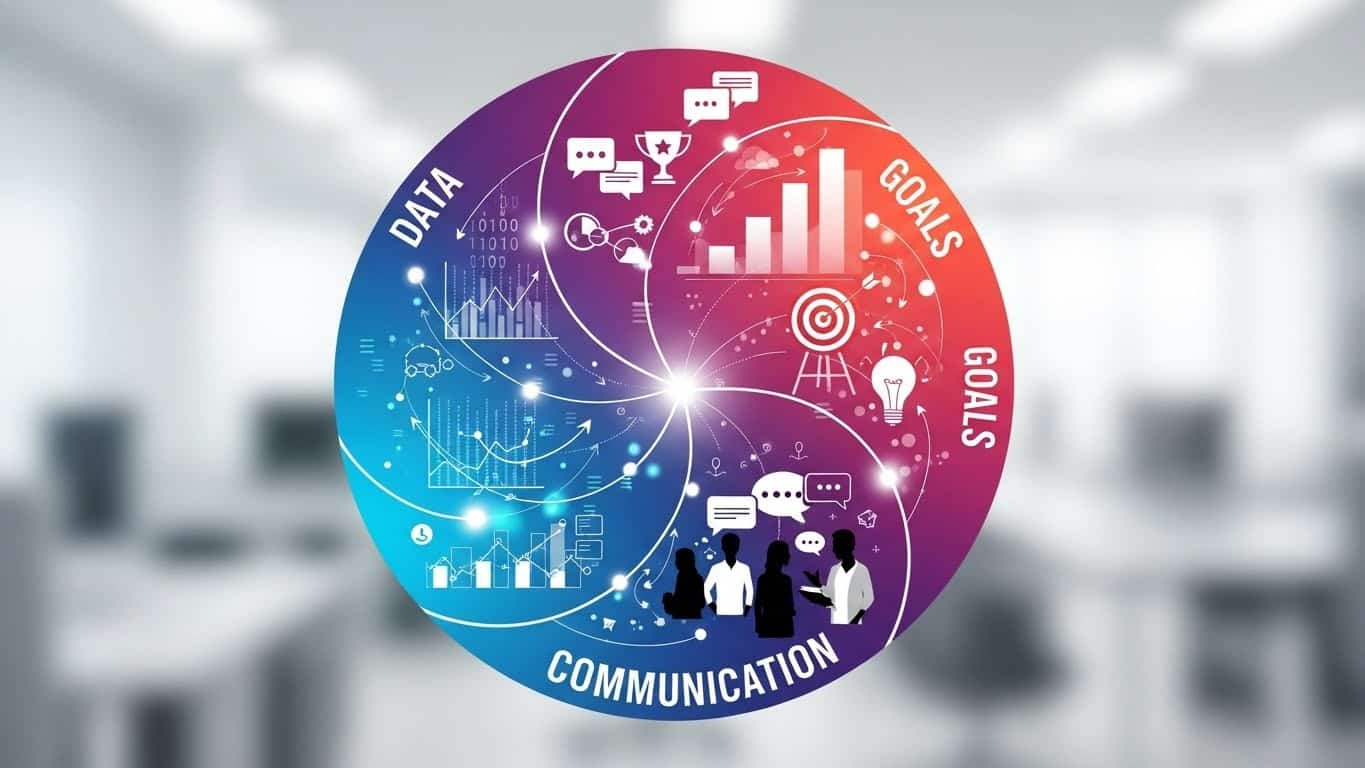Managing a Multi-Generational Team
There is no one-size-fits-all approach to managing a multi-generational team. With each generation having different quirks, values, work styles, and expectations, leaders need to acknowledge these differences and find ways to lead and motivate their multi-generational teams effectively. By promoting open communication, providing flexible work arrangements, offering opportunities for growth, and fostering a positive and inclusive workplace culture, leaders can unlock their team’s full potential.
Understanding the diverse needs and motivations among different generations is important for leaders to successfully tailor their management style. Addressing these differences can also help leaders avoid conflicts and resolve any issues that may arise within the team. By embracing diversity and combining the different skill sets of team members to drive progress, leaders can create a dynamic workplace where everyone feels valued and motivated to contribute their best.
Generational characteristics, values, and work styles
Baby Boomers
Baby boomers were previously the long-time reigning largest living generation until being overtaken by Millennials in 2020. Several boomers chose to retire or leave the workforce when staying home became the social norm. Yet, 41 million boomers in the U.S. are still employed, either full-time or part-time.
Recently, boomers have become increasingly worried about having enough money to retire when they want to, despite for the most part being more financially secure than younger adults. They have a reputation for being hardworking and dedicated, with a strong work ethic. They are often seen as highly committed to their jobs and are known for their loyalty to their employers. They value stability, hierarchy, and structure in the workplace, and tend to have a hierarchical approach to leadership and management.
Generation X
Generation X consists of individuals born between 1965 and 1980. According to the Bureau of Labor Statistics, the employment rate for Gen X is stable, with many of them occupying leadership and management positions in various industries.
Gen X is known for being independent, self-sufficient, and adaptable. They value work-life balance, practicality, informality, and autonomy in the workplace. They tend to be skeptical of authority and prefer a more hands-off approach to management.
They place a high value on personal responsibility and self-sufficiency and are often seen as practical, realistic, and results-oriented. They are highly motivated by opportunities for professional growth and development, and value opportunities to learn and grow on the job.
Millennials (Generation Y)
Millennials, also known as Generation Y, are the largest living generation. They are also the largest working generation, making up 35% of the labor force. As baby boomers retire over the next few years, that percentage is expected to increase significantly.
Millennials are known for being tech-savvy, socially conscious, and value-driven. They value experience, authenticity, collaboration, and a transparent work culture. They are ambitious about career growth, take a results-driven approach to work, and are highly motivated by opportunities to scale the corporate ladder. They appreciate a connection between their personal values and their work lives, with 75% of Millennials saying they would willingly take a pay cut to work for a socially responsible company.
Generation Z
Generation Z is the youngest generation of digital natives, making up a whopping 30 percent of the population. Gen Zers are known for being highly tech-savvy, adaptable, and entrepreneurial. Having grown up in a world of rapid technological advancements, they are very familiar with technology and digital platforms and have never known a world where Google and smartphones didn’t exist. They value diversity, equality, and environmental rights, and are often motivated by opportunities to make a positive impact in the world.
Generation Z has faced a unique set of circumstances in recent years, having still been in school or just entering the workforce when the pandemic hit. According to a study by Pew Research, half of Gen Zers between 18 and 23 reported that they or someone in their household lost a job or took a pay cut as a direct result of the pandemic, whereas only 40% of Millennials and 36% of Gen Xers reported the same. They’ve faced difficulties in their young careers and therefore take a resilient approach to work setbacks. Gen Z is also the best-educated generation yet.
In the workplace, Gen Zers value inclusiveness, fairness, compensation, and flexibility. They appreciate feedback, recognition, and opportunities for growth and development. Being too young to have known a time when work was 100% on-location or in-office, their idea of a “normal” work environment is far different from that of other generations. More than 70% of Gen Zers say they will be likely to quit a job that does not offer a hybrid or remote schedule, according to ADP Research Institute.
Challenges and solutions
With hybrid work being the norm, it’s more important than ever for business leaders to be able to effectively manage a multi-generational team in a distributed workplace. Plus, recruiting and retaining top talent is every business’s priority now that a whole new generation is rapidly entering the workplace. As mentioned, different generations have different needs, values, and problem-solving methods. Differences aren’t bad but they can easily lead to issues with collaboration and efficiency on projects if not addressed.
Read on as we explore some common challenges that come with managing a multi-generational team and dive into how to overcome them.
1) Different work styles and preferences
Different generations have very different work styles. For example, baby boomers are used to a traditional work environment that correlates authority with experience — while Gen Zers, the newbies to the workplace, are driven by less traditional and more creative motivations.
Because they have very different life experiences, different generations can offer unique insight into certain challenges or initiatives. A diverse and inclusive workplace where different generational perspectives are valued can foster a positive work environment and increase employee engagement, satisfaction, and performance. When employees feel valued and their contributions are recognized, they feel more motivated to meet and exceed expectations.
It’s also important to accept and acknowledge different work styles. For example, Gen Zers may work more productively from home or another non-office-like workspace and may even prefer to work less traditional hours than a regular 9-to-5. This doesn’t mean that you have to adopt drastic changes like a four-day work week, but whatever work schedule is decided upon should be reflective of getting the best out of your employees, based on what kind of structure they are most likely to thrive in.
2) Communication barriers
From slang terms and acronyms to broader communicative preferences, there is a wide range of communication barriers that can hinder productivity and collaboration among different generations. The best way to improve communication is to practice it. Implementing more frequent team meetings, encouraging feedback, and showing verbal appreciation will improve overall communication for any team, as well as promote effective problem-solving and collaboration.
It’s also important to consider varying communication preferences – younger generations may prefer digital communication via Slack message, whereas older generations may prefer face-to-face or phone conversations. Creating an environment that respects and accommodates open dialogue between all generations of employees is essential, encouraging multiple types of communication across the board.
3) Different values and priorities
Experience has a role in shaping us as people, from our morals to our goals and personalities. Different generations have been through different experiences and life events, so it makes sense for them to have very different values and priorities. While it always depends on the individual, the priorities of older generations tend to focus on stability, security, and job satisfaction. In comparison, younger generations place a higher value on work-life balance, flexibility, and career growth.
Each generation has also experienced different historical events, technological advancements, and cultural changes that have shaped their beliefs and perspectives. Older generations may have experienced significant social and cultural changes, such as the Civil Rights Movement or the Cold War. In contrast, younger generations have grown up with the rise of technology and social media, while living through a global pandemic before they were old enough even to enter the workforce.
Learning to embody various values in daily business life can be tricky. Still, it helps to create an inclusive culture where all values and opinions are respected, and employees feel like they matter.
4) Different levels of technological proficiency
It’s no secret that older generations are typically not as tech-savvy as younger generations. But this is inevitable, as they grew up without technologies that are now integral to our daily lives. Thanks to technology, new jobs are created every single day — from TikTok Managers to Influencer Marketers — technologies have given rise to new roles in the workforce that are not always easily understood by everyone.
It’s important for business leaders and managers to bridge this gap of understanding by providing ample training and opportunities for all generations to learn about new technologies so that all employees can utilize them efficiently and effectively. Companies can also consider using tools such as chatbots or artificial intelligence that can streamline processes and allow employees to focus on more meaningful tasks. Additionally, business leaders should strive to create a technology-positive work environment where employees are encouraged to use technology to improve their work and increase their overall efficiency.
5) Generational biases
One of the few things that all generations have in common is that they are all human – complete with flaws and biases. It’s not uncommon for generations as a whole to band together and develop opinions about other generations, primarily due to the fact that they struggle to understand each other.
For example, older generations may view younger generations as entitled or lacking work ethic, while younger generations may view older generations as resistant to change or out-of-touch with technology. These biases can have a negative impact on workplace dynamics and hinder the progress of a business. To overcome the presence of generational biases, it is important to educate employees on the cultural differences and values that each generation brings to the workplace. Encouraging open communication, mutual respect, and valuing diverse perspectives can create a more inclusive work environment and foster intergenerational collaboration. Additionally, implementing diversity and inclusion training programs can help raise awareness and reduce the impact of these biases.
Final Thoughts
In conclusion, managing a multi-generational team can present unique challenges for business leaders. However, leaders can create a dynamic and inclusive workplace by embracing the team’s diversity and understanding each generation’s differences. By promoting open communication, providing flexible work arrangements, offering opportunities for growth and development, and fostering a positive work culture, leaders can effectively lead and motivate their teams to reach their full potential.





